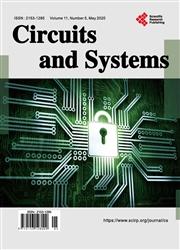THD Analysis of Cascaded H-Bridge Inverter with Fuzzy Logic Controller
引用次数: 1
Abstract
In recent days, the multilevel inverter technology is widely applied to domestic and industrial applications for medium voltage conversion. But, the power quality issues of the multilevel inverter limit the usage of much sensitive equipment like medical instruments. The lower distortion level of the output voltage and current can generate a quality sinusoidal output voltage in inverters and they can be used for many applications. The harmonics can cause major problems in equipments due to the nonlinear loads connected with the power system. So, it is necessary to minimize the losses to raise its overall efficiency. In this paper, a new topology of seven level asymmetrical cascaded H-bridge multilevel inverter with a Fuzzy logic controller had been implemented to reduce the Total Harmonic Distortion (THD) and to improve the overall performance of the inverter. The proposed model is well suited for use with a solar PV application. In this topology, only six IGBT switches are used with three different voltage ratings of PV modules (1:2:4). The lower number of semiconductor switches leads to minimizing overall di/dt ratings and voltage stress on each switches and switching losses. The gate pulses generated by Sinusoidal Pulse Width Modulation (SPWM) technique with a Fuzzy logic controller are also introduced. A buck-boost converter is used to maintain the constant PV voltage level integrated by an MPPT technique followed by Perturb and Observer algorithm is also implemented. The MPPT is used to harness the maximum power of solar radiations under its various climatic conditions. The new topology is evaluated by a Matlab/Simulink model and compared with a hardware model. The results proved that the THD achieved by this topology is 1.66% and realized that it meets the IEEE harmonic standards.模糊控制器级联h桥逆变器的THD分析
近年来,多电平逆变器技术被广泛应用于中压转换的家庭和工业应用。但是,多电平逆变器的电能质量问题限制了医疗仪器等敏感设备的使用。输出电压和电流的低失真水平可以在逆变器中产生高质量的正弦输出电压,它们可以用于许多应用。由于与电力系统相连接的非线性负荷,谐波会给设备带来严重的问题。因此,有必要尽量减少损失,以提高其整体效率。本文提出了一种采用模糊控制器的七电平非对称级联h桥多电平逆变器的新拓扑结构,以降低逆变器的总谐波失真,提高逆变器的整体性能。所提出的模型非常适合用于太阳能光伏应用。在这种拓扑结构中,只有6个IGBT开关用于3种不同的PV模块电压额定值(1:2:4)。较低数量的半导体开关导致最大限度地减少总体di/dt额定值和每个开关上的电压应力和开关损耗。本文还介绍了采用模糊控制器的正弦脉宽调制(SPWM)技术产生的门脉冲。采用降压-升压变换器维持恒定的PV电压水平,集成了MPPT技术,并实现了Perturb和Observer算法。MPPT用于在各种气候条件下利用太阳辐射的最大功率。通过Matlab/Simulink模型对新拓扑进行了评估,并与硬件模型进行了比较。结果表明,该拓扑实现的总谐波差为1.66%,符合IEEE谐波标准。
本文章由计算机程序翻译,如有差异,请以英文原文为准。
求助全文
约1分钟内获得全文
求助全文

 求助内容:
求助内容: 应助结果提醒方式:
应助结果提醒方式:


